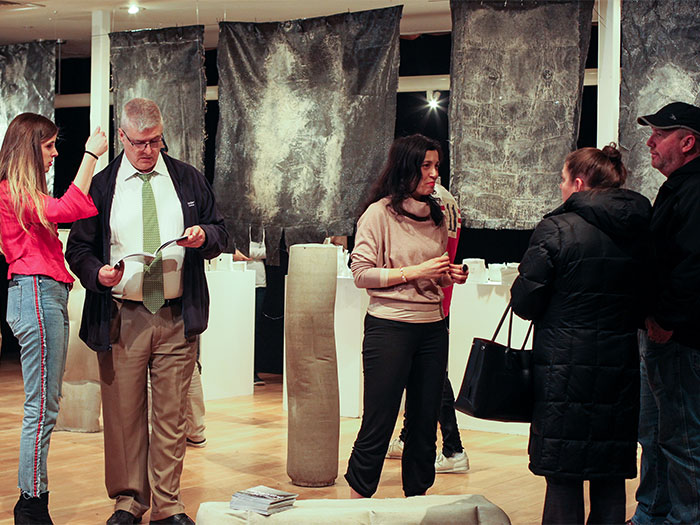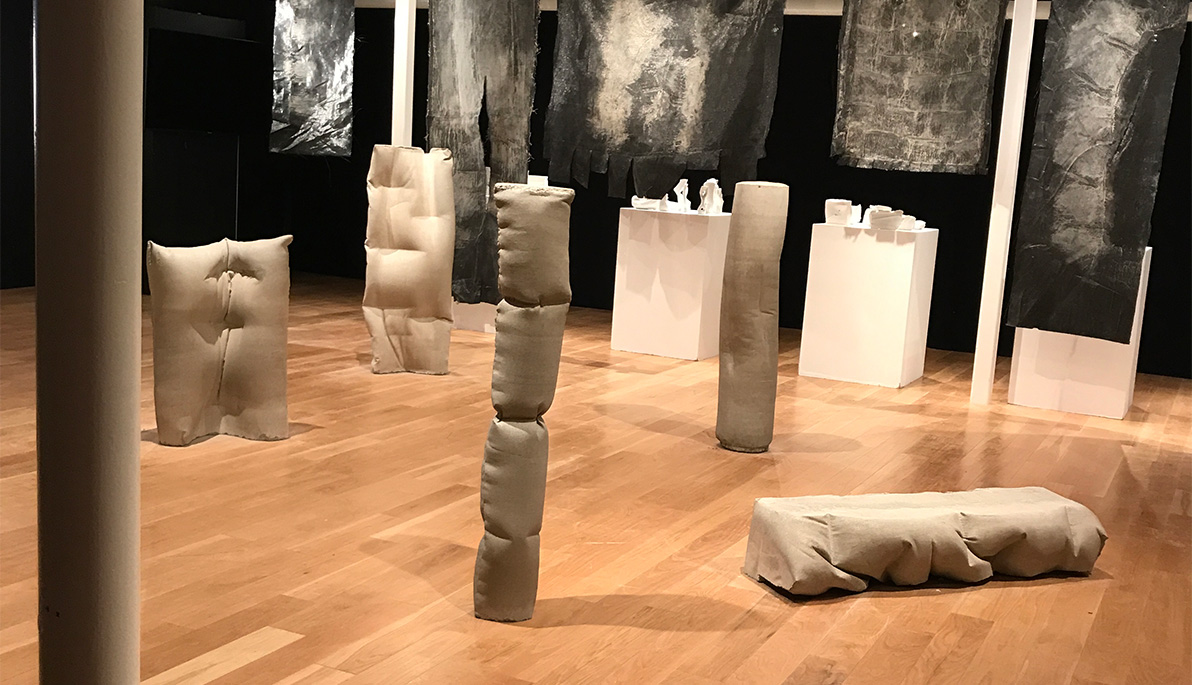News
Design in Motion
March 26, 2018
Pictured: The playscape sculptures on display at Education Hall Center Gallery.
How do you design a “wiggle”?
That was the question put forth by Associate Professor Naomi Frangos to NYIT School of Architecture and Design students in her Fabrication and Design: Variable Flexible Formwork class. Her goal: get them to use action words to fuel their creation of playscapes—curve-shaped structures designed to encourage playful activity with children and adults—for a high school in Los Angeles. Helping them were landscape architecture students from California State Polytechnic University, Pomona (Cal Poly Pomona) under the direction of Frangos’ faculty counterpart, Assistant Professor Rennie Tang.
In an initial fabrication course last fall, Frangos asked students to come up with words that constituted play. “We wanted them to think of verbs,” she says. “They came up with verbs like wiggle, stretch, and twist, and so on.”
From there, the students used pins and strings on boards to simulate these movements. These helped inform the shape of plaster forms that were cast in fabric and then scaled up as cast concrete prototypes during a collaborative January workshop between NYIT and Cal Poly Pomona students at NYIT-Old Westbury’s Sculpture Barn. Supervising the workshop with Frangos was Tang, as well as Ronnie Araya, an architect from Montreal, and Remo Pedreschi, professor of architectural technology from University of Edinburgh.

Associate Professor Naomi Frangos, center, greets attendees at the opening reception of Inhabiting Surface: Studies in Variable Formwork Design exhibition.
“Our sculpture barn was brought to life for five days as students embarked on an intense hands-on learning experience, the products of which are now being showcased in Education Hall,” says Frangos. “The title of this exhibition, Inhabiting Surface, emerges from my joint research with Professor Tang on bridging human movement and variable formwork as a strategy towards finding dynamic new forms that lie at the intersection between architecture and landscape.”
In designing the playscape sculptures, NYIT students appreciated the unique construction materials that blended concrete with fabric. “We’re told that concrete is rigid but with fabric we had more flexibility than we were used to,” says NYIT architecture student Walter Romero.
After the Cal Poly Pomona students returned home following the January workshop in the Sculpture Barn, NYIT students continued to communicate with them to further refine their ideas and designs. “I learned that I needed to make things clearer since we were not interacting with them in person,” says Rochelle Browne, Romero’s classmate. “With virtual communication, it felt more like how real-world architects interact across vast distances.”
The preliminary designs of “Inhabiting Surface: Studies in Variable Formwork Design” will be on display through April 2 at the Education Hall Center Gallery. Later this year, Frangos and her students plan to travel to Los Angeles and reconstruct the playscape using 3D scans of the concrete designs for International Polytechnic High School, located on the Cal Poly Pomona campus.
For now, Inhabiting Surface, with its unique build materials and interdisciplinary collaboration with Cal Poly Pomona, has already proved a unique learning experience for Frangos’ class.
“If you want to design something that has systematic and organized form, you need to be incredibly rigorous about your process and understand how each part is important,” says NYIT student Benjamin Sather.





